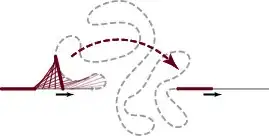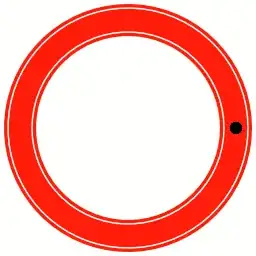Gilbreath's conjecture is an unsolved problem related to primes which is as accessible to the layman as the Goldbach conjecture and twin prime conjecture, if not more so. It says that if we write out the prime numbers in order
$2, 3, 5, 7, 11, 13, 17, 19, 23, 29, 31, ...$
then take the absolute values of the differences (often called the absolute difference) between consecutive terms,
$1, 2, 2, 4, 2, 4, 2, 4, 6, 2, ...$
and now do the same to the resulting values, then to those values, and so on to infinity i.e.
$1, 0, 2, 2, 2, 2, 2, 2, 4, ...$
$1, 2, 0, 0, 0, 0, 0, 2, ...$
$1, 2, 0, 0, 0, 0, 2, ...$
$1, 2, 0, 0, 0, 2, ...$
$1, 2, 0, 0, 2, ...$
the first term is always $1$. A simple observation utilized by Andrew Odlyzko to verify the conjecture for the first $3.4 \times 10^{11}$ differences is that if a sequence begins with $1$ and continues with only $0$ and $2$ for the next $n$ terms, then the next $n$ iterated differences must also begin with $1$, since the absolute difference between any combination of $0$ and $2$ is also $0$ or $2$, and the absolute difference between $1$ and either $0$ or $2$ is necessarily equal to $1$. Kyle Sturgill-Simon gives a nice exposition of the problem written specifically for the layman here.
Precisely the same conjecture has been made for the practical numbers, which have other significant analogies with prime numbers as well (see link). For intuition's sake the practical numbers can be seen as complementary to the primes in the sense that, whereas a prime number has no prime factors less than itself, a practical number typically has many prime factors which are small in comparison with the number itself. As a consequence, small multiples of practical numbers are also practical. In particular, if $n$ is practical and $1\leq m\leq 2n$, then $nm$ is practical. They begin:
$1, 2, 4, 6, 8, 12, 16, 18, 20, 24, 28, 30, 32, 36, 40, 42, 48, 54, ...$







